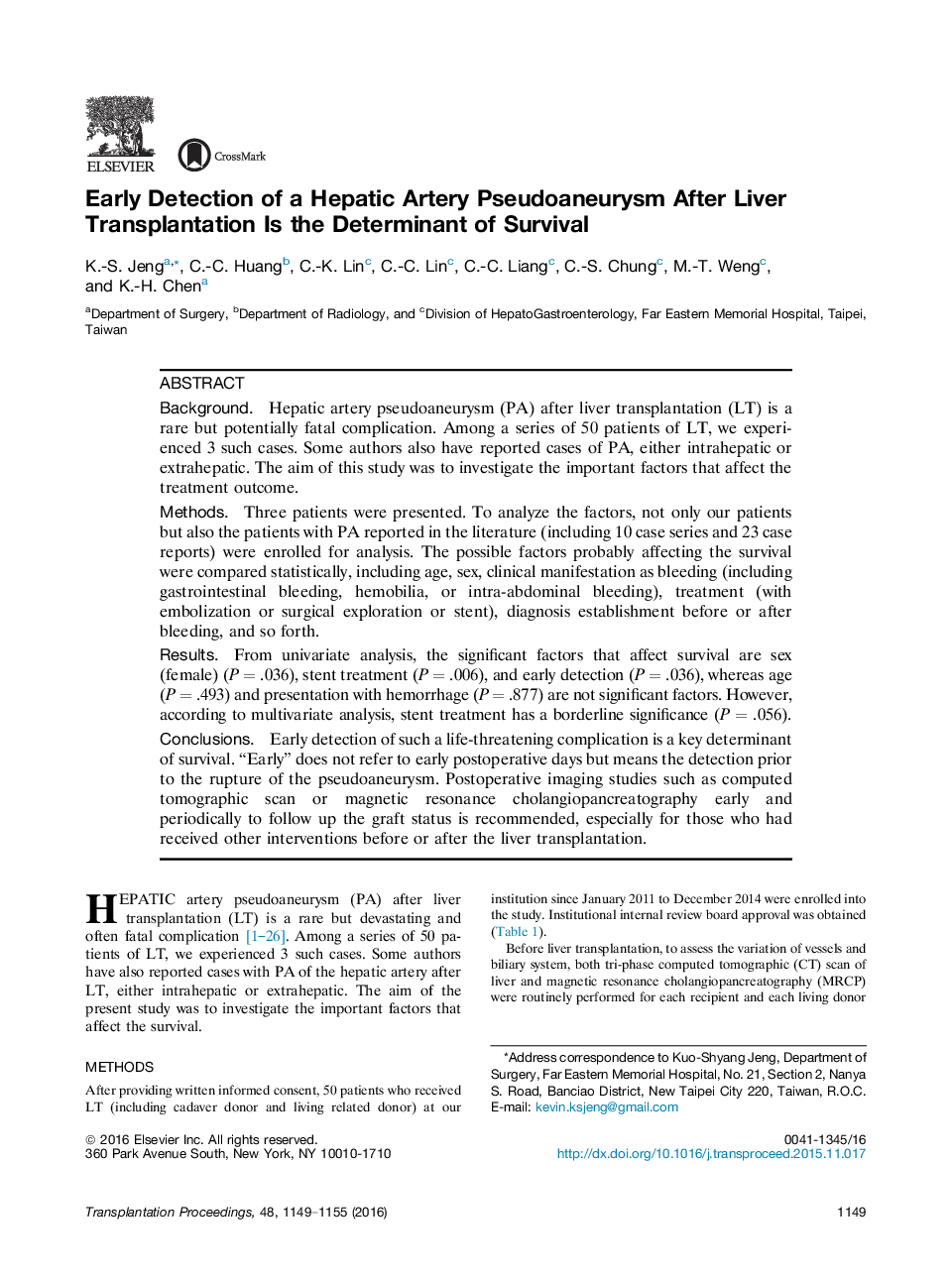| کد مقاله | کد نشریه | سال انتشار | مقاله انگلیسی | نسخه تمام متن |
|---|---|---|---|---|
| 4255979 | 1284506 | 2016 | 7 صفحه PDF | دانلود رایگان |
• Pseudoaneurysm of the hepatic artery after transplantation is rare but critical.
• Early detection is a main determinant of survival.
• Periodic CT to follow up the graft stature is suggested.
BackgroundHepatic artery pseudoaneurysm (PA) after liver transplantation (LT) is a rare but potentially fatal complication. Among a series of 50 patients of LT, we experienced 3 such cases. Some authors also have reported cases of PA, either intrahepatic or extrahepatic. The aim of this study was to investigate the important factors that affect the treatment outcome.MethodsThree patients were presented. To analyze the factors, not only our patients but also the patients with PA reported in the literature (including 10 case series and 23 case reports) were enrolled for analysis. The possible factors probably affecting the survival were compared statistically, including age, sex, clinical manifestation as bleeding (including gastrointestinal bleeding, hemobilia, or intra-abdominal bleeding), treatment (with embolization or surgical exploration or stent), diagnosis establishment before or after bleeding, and so forth.ResultsFrom univariate analysis, the significant factors that affect survival are sex (female) (P = .036), stent treatment (P = .006), and early detection (P = .036), whereas age (P = .493) and presentation with hemorrhage (P = .877) are not significant factors. However, according to multivariate analysis, stent treatment has a borderline significance (P = .056).ConclusionsEarly detection of such a life-threatening complication is a key determinant of survival. “Early” does not refer to early postoperative days but means the detection prior to the rupture of the pseudoaneurysm. Postoperative imaging studies such as computed tomographic scan or magnetic resonance cholangiopancreatography early and periodically to follow up the graft status is recommended, especially for those who had received other interventions before or after the liver transplantation.
Journal: Transplantation Proceedings - Volume 48, Issue 4, May 2016, Pages 1149–1155
